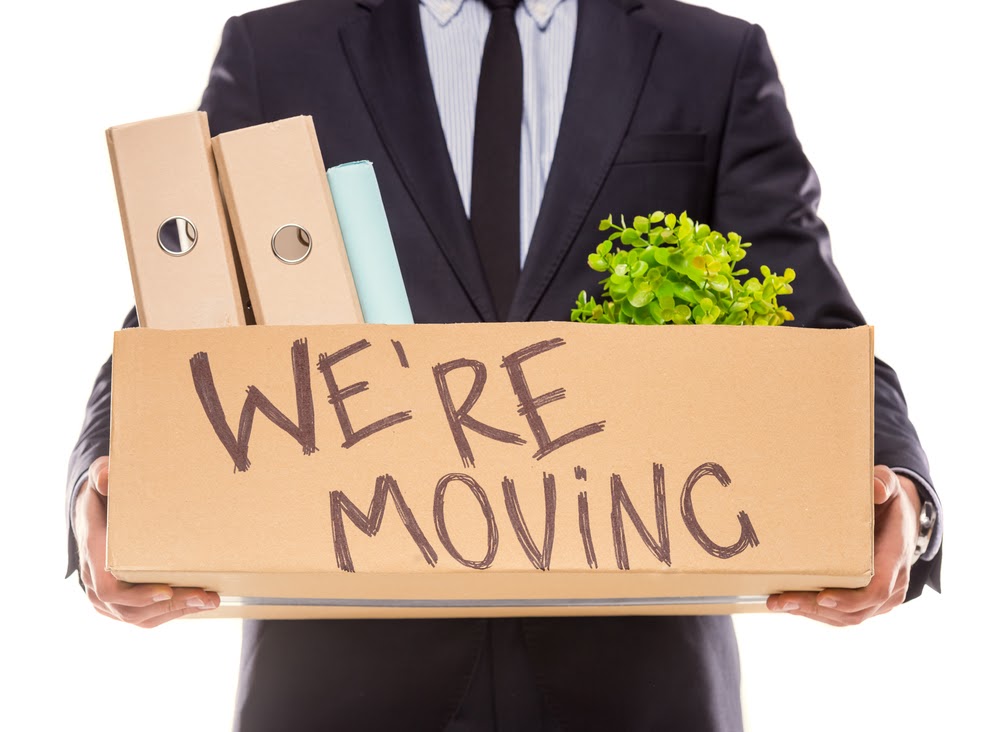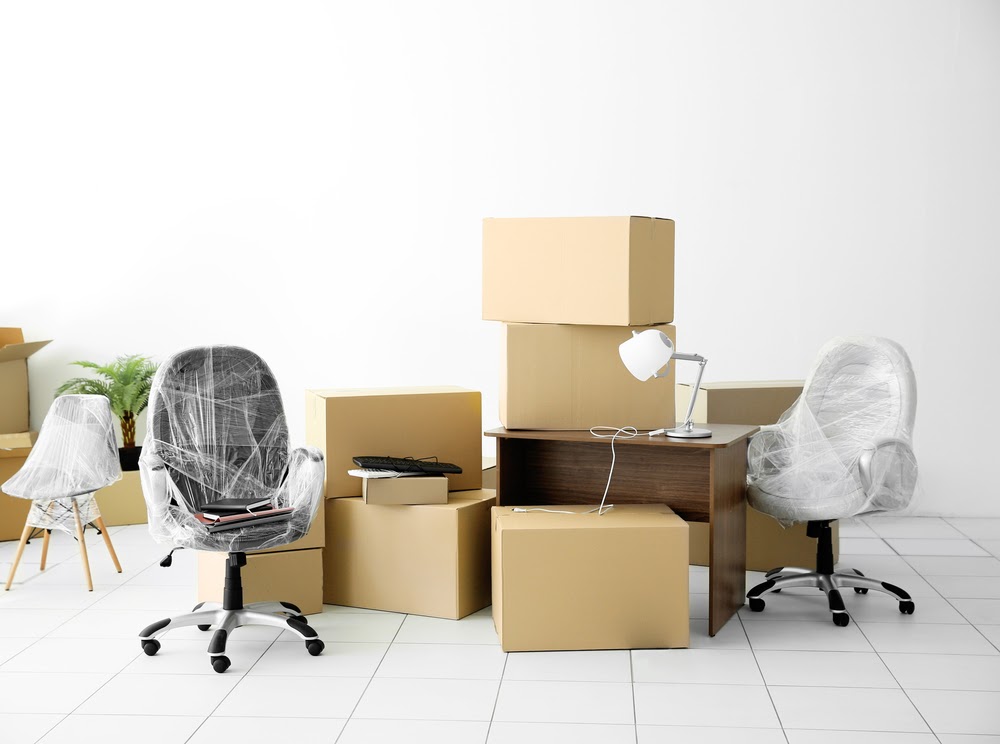If you are planning a corporate office move or any other commercial relocation, you may be overwhelmed. Relocating your business requires specialized planning. You need to move your entire business to a new location including your employees, your office furniture, machinery, and electronics. Planning and organizing your office move in advance will make it go much smoother.
Using our Ultimate Office Moving Checklist and Relocation Guide, you can make sure that your business relocation goes smoothly – and your furniture and equipment make it in one piece!
Six Months Before Your Office Move
About six months before you plan your office move, it is time to do some logistical planning. It’s not yet time to pack or move items to a new location, but it is time to make sure you have a good plan and moving team in place for your office relocation.
Determine Moving Scope
Determine the scope of the office move before creating your moving plan or even setting a moving date. This will help you see the move in a big-picture way and help you decide on a moving budget.
Some questions you might ask to get a better idea of the scope of your move are:
- Are you moving your entire company to a new location?
- Are you moving just a part of your business to the new location?
- How large is the space of the new office space vs your current location?
- Are you downsizing and need to get rid of things or upgrading and need new office furniture?
- Do you have heavy machinery that may require specialized equipment to move?
Create Office Move Inventory List
A master inventory list ensures that you forget anything at the old office! Create a spreadsheet with a list of all items, furniture, and equipment for your company office. You can update this spreadsheet with more details when you determine which items will be moving and where they will be going in the new space.
Review Current Commercial Lease
Will you need to forfeit a deposit or pay an extra fee if you are breaking your lease? Are you responsible for cleaning the space before leaving? Are you responsible for minor property damage like paint chips or anything that may happen during your moving process? How much notice do you need to give your landlord if you’re moving out before the end of your lease?
Create a Budget for Your Upcoming Move
Creating a budget at the beginning of your office move planning will help guide your decisions and keep you on track. Yes, you might need professional movers to pack up office furniture and equipment, but maybe your employees can handle the packing and labeling of their workspaces.
Create an Office Moving Team and Assign Roles
Your office moving team size is likely dependent on your company size. Determine who will and will not help your plan the upcoming business relocation and assign roles. Who is making sure all the employees pack up their desk items correctly? Who is responsible for transferring business utilities?
Compare Commercial Moving Company Quotes
Once you know the scope of your move, you can find trusted commercial movers that offer the commercial moving services you need. If your budget isn’t flexible or is small, consider a moving company offering flat rates moving quotes that won’t increase on moving day. Beware of low ball offers; if a moving company’s quote seems too good to be true, it probably is.
Create an IT Coordination Plan
Whether you are a digital or tech company relying on computers every day or are in a more industrial business, you’ll need an IT plan. Do you have project deadlines that may be affected by the move? How much time will be needed to back up servers and systems? How long will it take to get the new systems up and running at the new location?
Three to Five Months Before Your Office Relocation
Set a Moving Date
Once all of the details are set and you are sure of your new office location, set a reservation with your moving company and save the date!
Create a Moving Plan + Assign Responsibilities
Your office moving team needs to draft up all actions that need to be done to make this move happen. Each task needs to have a deadline and then be assigned to a member of your moving team.
Notify Employees of the Move
While you don’t need to have all of the details, make sure your employees know when you’ll be moving and set their expectations of the upcoming moving experience.
Create Inventory of Partners, Vendors, and Suppliers
Determine which service providers and suppliers are coming with your business to the new location, and which services you may need to find new providers for. Notify your vendors and partners of your upcoming move and set transfer/cancellation dates.
Hire an Interior Designer
If you are planning on hiring a design firm to give your new business space a great look and feel, now is the time to do it. They’ll use your floor plan to help you make the most of your new space.
Order New or Specialized Furniture
Are buying new furniture for your new office location that may need some time to be manufactured? The last thing you want to do is move into your new space without any furniture to fill it!
Two Months Before Moving Your Business
Finalize Master Floorplan
Your master floorplan will be useful to your employees, interior designer, and your corporate movers. It should indicate where each piece of furniture or equipment should go. Each employee’s workspace should be represented on your floorplan.
Update Business Correspondence Materials
Now is a good time to change your address and reprint any materials your company uses like letterheads, business cards, etc.
Confirm Facility Access Plan
For your current location will you need to collect keys or parking passes before leaving? Do you need to hand out new keys or materials for access to the new facilities?
Begin Copying/Backing Up Paper Documents
While digital documents can be backed up onto external drives or online, if you’re moving your company’s paper records, you need a document relocation plan. Will someone be responsible for personally transporting important documents? If you are planning to put them on a moving truck, do you have copies in case they are destroyed?
Distribute Moving Process Information to Employees
Make sure you detail the moving plan for your employees so they know what to expect and where to help out. Include dates and deadlines so they know what to have packed up and when.
Discontinue Local Services
You don’t want to keep paying for local services at a location where you will no longer be. Be sure you review your partner and vendors to determine which services should be canceled.
Confirm Certificates of Occupancy and Other Permits
If you are moving into a newly built space, make sure you have all the necessary permits and certificates to operate your business in your new location.
Collect Moving Boxes and Packing Supplies
There never seems to be enough packing supplies during a move! When you start packing up non-essentials, that is a great time to make sure you have all the moving boxes, packing paper, packing tape, and bubble wrap you will need.
Purge and Declutter the Office
Don’t pack items that aren’t going to the new office. A few months before your office relocation, make sure that you declutter and get rid of anything your company will no longer be needing.
Create a Change of Address List
It may not be time to change your address, but if you make a list of the places you will need to change your business address beforehand, you can make sure you don’t forget one!
One Month Before Moving
Arrange for Post-Moving Cleaning
Don’t leave your office space a mess just because you have some fresh paint somewhere else. Hire a post-move cleaning company to make everything look new again once all of your items are gone.
Confirm Loading Dock/Elevator at New Location
If your new building has a loading dock or freight elevator, you may need to call a property manager or the building manager to reserve them for your moving day. Getting sole access to a building’s only elevator on moving day helps create a stress-free moving experience.
Pack and Label Common Area Items
If you have a large office space, you may have common areas full of decor and other pleasantries that aren’t essential to your everyday business. Start packing up books that aren’t essential to everyday office operation. Begin packing these areas up and labeling their boxes detailing what is in the box and where they go in the new space.
Update Company Address Listings
There are several places where you will need to update your address besides sending the post office a notification. Some of these address changes will include:
- Banks and Financial institutions
- Company Website
- Social Media profile
- Business and Industry Directory Listings
- Vendors/Partners/Services/Affiliations
Obtain Access Materials for New Facilities
Make sure you have all the keys made or PIN codes set so everyone who needs access to the new building has access on moving day.
All Office Furniture and Equipment Labeled and Tagged
If you have a small office or business space, you can label your office furniture and equipment closer to your moving date. Make sure labels or tags include where they belong in the new space or a reference to the master floor plan.
One Week Before Your Move
Back-Up All Company Documents and Data
In coordination with your IT department or IT vendor, ensure that as close to your move-in date as possible, you then back up your computer systems in case there are any issues when setting up and rebooting later.
Put Up Signs and Directions for Movers
You and your employees are used to stepping over the chairs on the 3rd floor and know you can’t use that one door because there are desks stacked on the other side. Your movers won’t have that knowledge unless you tell them. Help them be able to navigate the current location and the new locations with directives, labels, and signage.
Don’t Lose the Keys!
Once desks and file cabinets are empty, make sure that you tape the keys to the bottom of them so you don’t lose them during the move.
Pack and Label All Desks
Your employees should have their desks labeled and packed according to the instructions you gave them. If they are moving their desk items, let them know the final day to pack up.
Final Walkthrough of the New Office
Before your moving day, make sure you get a final walkthrough of the new office. Are the lights working? Is the HVAC system functioning correctly? Did the contractors fix that chip in the wall like they said they would?
Review Moving Day Schedule
Before moving day arrives, you should have peace of mind knowing everything is going according to plan. Review your moving day agenda and make sure there is nothing that fell through the cracks.
Change VoiceMail to Indicate the Company Has Moved
For at least 6 months after your business moves, your voicemail or mail greeting should include that information.
Stock up on Surface Protectors and Moving Blankets
Boxes not suited for packing can be used to help protect floors, but you should also stock up on moving blankets and other surface protectors.
Finish Packing and Labeling Office Items + Furniture
Reference your Office Inventory List to make sure that everything in your office has been packed and labeled correctly for your movers.
Collect Old Access Materials; Handout New Access Materials
As part of your employee’s checkout process, one of the very last steps should be the exchange of facility access materials. On the last day of work before the move, have employees hand in keys and parking passes to get new ones for
What to Do on Moving Day
Assist Your Professional Office Movers
On moving day, make sure your drivers know where to park their truck, how to access the loading dock, and where the elevators are.
Setup Your New Office
Once all the furniture and boxes have been moved into your new location, start setting up your new office and rebooting computer systems. Reconnect your internet and phone services, calling utility providers if you run into issues. Reference your Master Floorplan with your movers, interior designer, and IT team to make sure everything gets to its proper place.
Final Walkthrough of Old Office
After everyone thinks everything has been loaded into the moving truck, do a final walkthrough to be sure. Check hallways, offices, closets, and elevators for anything you may have left behind or for any damage that may have happened during the move.
Check for Damaged Furniture or Items
Make sure your movers transported all of your items without damage before you sign off on your move in case you need to process a claim.
Test all Computers, Machines, and Equipment
As soon as possible, get everything connected and test all of your tech equipment, computers, phones, printers, and other office machines. Start to troubleshoot connectivity or network issues.
After your Office Relocation
Reconfirm Termination of Old Lease
Make sure that you have terminated your lease with your old location. Have you fulfilled all of your obligations? Have access materials like keys or parking passes been returned? Has the office been cleaned post-move?
Complete Unpacking of Office
Some of your items may have been packed in boxes or crates from your moving company. Designate an area for discarded materials and an area to collect empty crates. Arrange a time for the emptied crates to be picked up.


